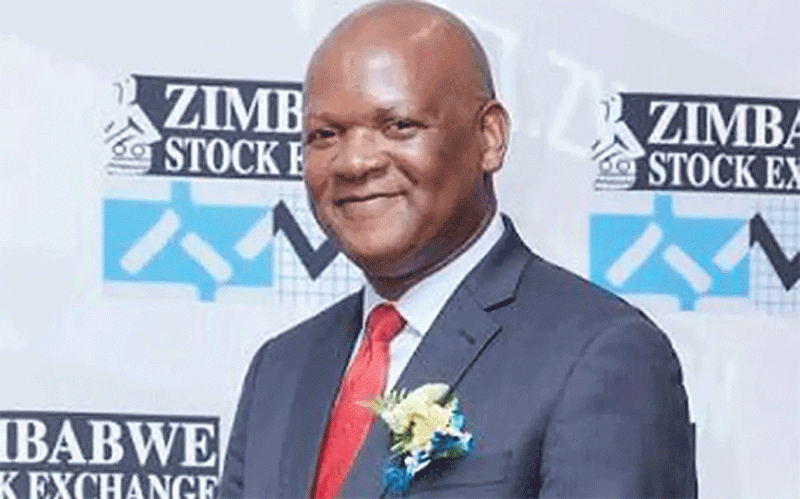
Turnover on the forex- indexed Victoria Falls Stock Exchange (VFEX) surged by 232% during the first half, as investors seeking US dollar exposure ramped up activity on the four year-old bourse, fresh market data revealed.
The rally is challenging early scepticism over VFEX’s viability and policy intent, with analysts now tracking growing interest in the bourse as a credible capital-raising platform.
Yet the upturn has not been driven by a price boom, but by volumes and a spike in trades.
According to FBC Securities, turnover soared to US$73 million between January and June, up from US$22 million in the same period last year. Share volumes exploded by 795%, hitting 1,28 billion, compared to 143 million previously.
“The VFEX continues to position itself as a credible US dollar denominated platform for export-aligned and institutional-grade listings,” FBC said. “Going forward, policy consistency, liquidity enhancement, and targeted product innovation will be critical to sustaining investor confidence.’
VFEX trades on the Zimbabwean markets alongside its more established peer, the Zimbabwe Stock Exchange (ZSE).
The number of trades rose 26% to 7 394 from 5 874. Analysts say the shift could signal increased retail investor participation, which had been largely absent since the bourse launched in 2020.
“The rally could be an indication of rising retail participation,” said Tapiwa Sibanda, head of strategy at Trade Winds.
- Stop clinging to decaying state firms
- Zim bourse in limbo
- Piggy's Trading Investing Tips: De-risking mining projects
- Chance to buy 'undervalued' counters: FBC
Keep Reading
VFEX’s All Share Index posted a modest 3% increase to 107.21, buoyed by activity rather than pricing. In contrast, overall market capitalisation fell 1,9%, weighed down by stagnant valuations and the delisting of National Foods.
The sharp rally is notable given the exchange’s rocky start.
VFEX was launched under controversial circumstances after government suspended trading on the Zimbabwe Stock Exchange (ZSE) in June 2020, blaming three fungible counters—Old Mutual, PPC, and SeedCo International—for exacerbating currency turmoil and speculative attacks on the Zimbabwe dollar.
When ZSE resumed trading that August, the three counters were instructed to consider joining VFEX, which was still on the drawing board. SeedCo obliged, listing in October 2020. PPC and Old Mutual never came on board, citing regulatory uncertainty and valuation concerns—issues that persist today.
Nearly five years on, VFEX’s credibility is gaining traction. A string of high-profile listings, including African Sun, Padenga, and Caledonia Mining, has helped position the platform as a serious player in Zimbabwe’s capital markets.
But structural issues remain.
Critics argue that VFEX’s growth has come primarily from migrations off ZSE, rather than attracting genuinely new capital or companies. That trend has raised concern about market cannibalisation.
The ZSE itself posted a mixed performance in the same period. Turnover reached ZiG2,35 billion, but trading was concentrated in three counters: Econet with 40,1%, Delta with 35,5% and NMB, which accounted fir 6,2%. Share volumes jumped 179% year-on-year to US1.27 billion, but the number of trades fell sharply—down 31% to 11 408, suggesting a market dominated by block trades and institutional manoeuvres.
“The All Share Index declined by 9,35%, driven largely by constrained money supply and sustained foreign investor selling that outpaced purchases nearly threefold,” FBC noted.
Despite these pressures, market capitalisation on ZSE remained stable at around ZiG60 billion, a 3,41% increase from January. Analysts attributed this to sector rebalancing, as investors took shelter in more defensive or US dollar-linked assets.
For both markets, the second half of 2025 will be critical.
Tight liquidity conditions, exchange rate instability, and shifting asset allocation patterns—particularly a drop in pension fund allocations to equities, which fell to 19% by March—are reshaping Zimbabwe’s investment landscape.
While ZSE explores new structural reforms, including the self-listing of ZSE Holdings, VFEX appears better aligned with Zimbabwe’s de facto dollarisation and evolving investor preferences.
Its US dollar-denominated structure provides a buffer against local currency risk and remains a key drawcard for exporters and offshore-focused institutional funds.Still, long-term success hinges on one thing: consistency.
If authorities deliver stable policy, deepen liquidity, and innovation around new financial products, VFEX could emerge as a cornerstone of Zimbabwe’s reconfigured capital markets—something unthinkable just five years ago.










